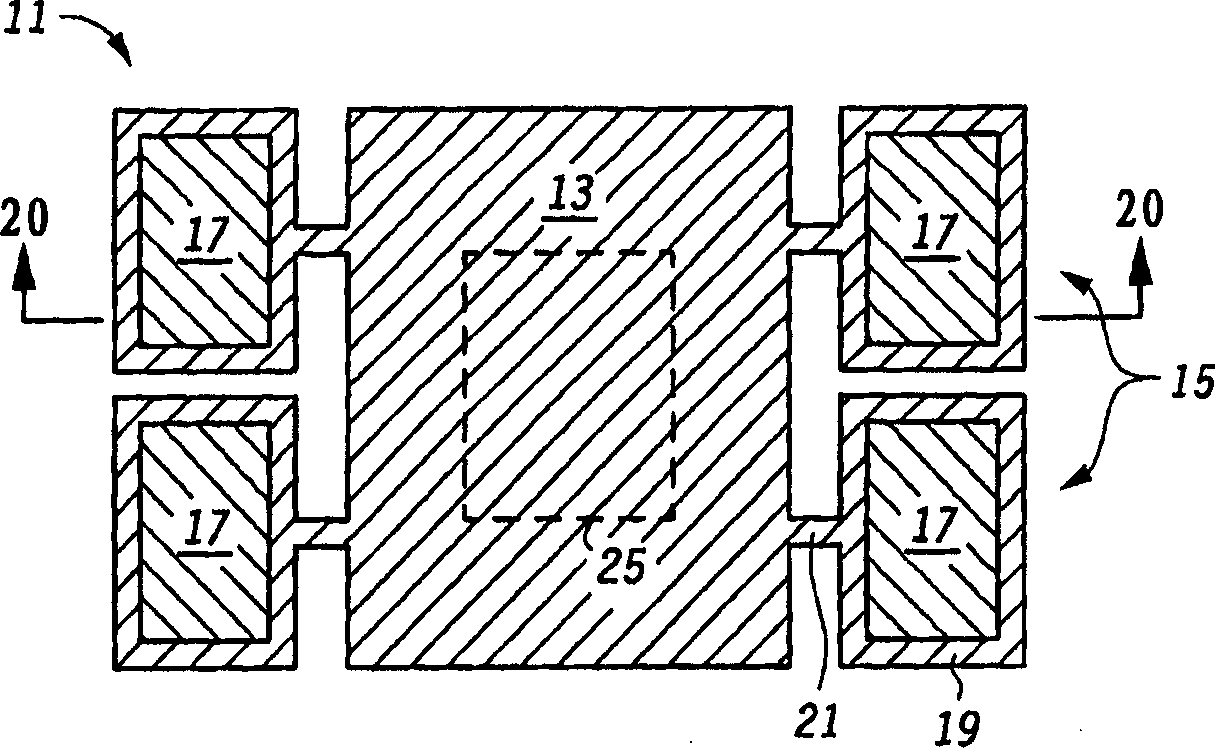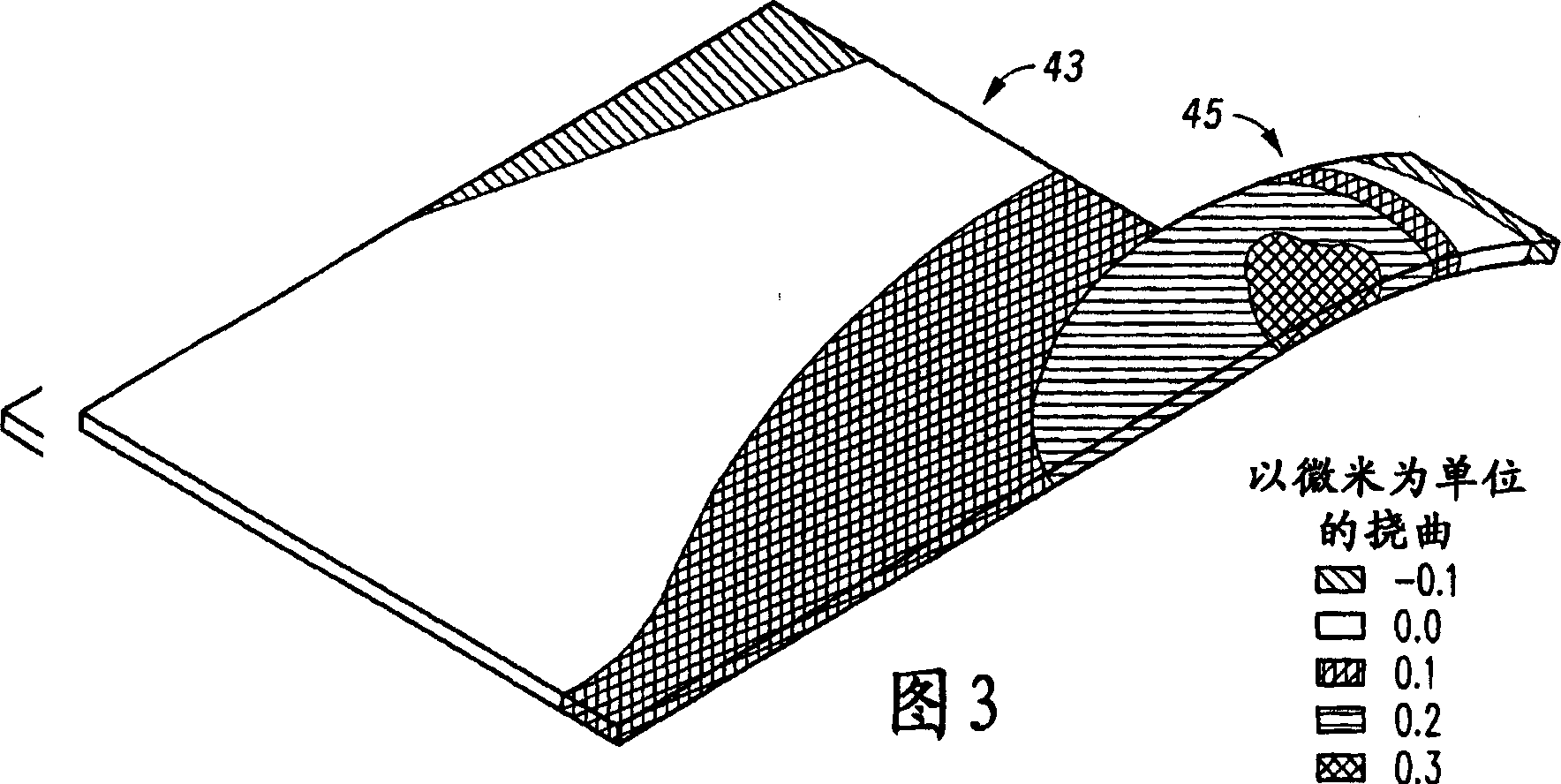Method of adding mass to MEMS structures
A micro-electromechanical sensor and detection mass technology, applied in the field of MEMS devices, can solve the problems of increased weight, increased size, and unpopularity of the detection mass.
- Summary
- Abstract
- Description
- Claims
- Application Information
AI Technical Summary
Problems solved by technology
Method used
Image
Examples
example 1
[0045] This example is used to illustrate the effect of CTE differential stress between the appendage of the proof mass and the base for a proof mass separated from the base by a narrow rod and the appendages are composed of different materials (i.e. aluminum and polysilicon). transfer.
[0046] Repeat the simulation test of comparative example 1, but adopt such as Image 6 Proof masses of the type indicated. The detection mass body 51 is composed of a polysilicon substrate 53 and a square appendage 55 connected thereto. The appendages consist of a layer of polysilicon 59 with a layer 57 of aluminum deposited to a thickness of 3 microns. The side length of the appendages is 100 μm. The appendages are separated from the base body by rods 61 having a width of 3 microns and a length of 2 microns, the main surfaces of the appendages being parallel to those of the base body.
[0047] The calculated stresses during the temperature cycle from 25°C to 125°C are shown graphically i...
PUM
 Login to View More
Login to View More Abstract
Description
Claims
Application Information
 Login to View More
Login to View More - R&D
- Intellectual Property
- Life Sciences
- Materials
- Tech Scout
- Unparalleled Data Quality
- Higher Quality Content
- 60% Fewer Hallucinations
Browse by: Latest US Patents, China's latest patents, Technical Efficacy Thesaurus, Application Domain, Technology Topic, Popular Technical Reports.
© 2025 PatSnap. All rights reserved.Legal|Privacy policy|Modern Slavery Act Transparency Statement|Sitemap|About US| Contact US: help@patsnap.com



